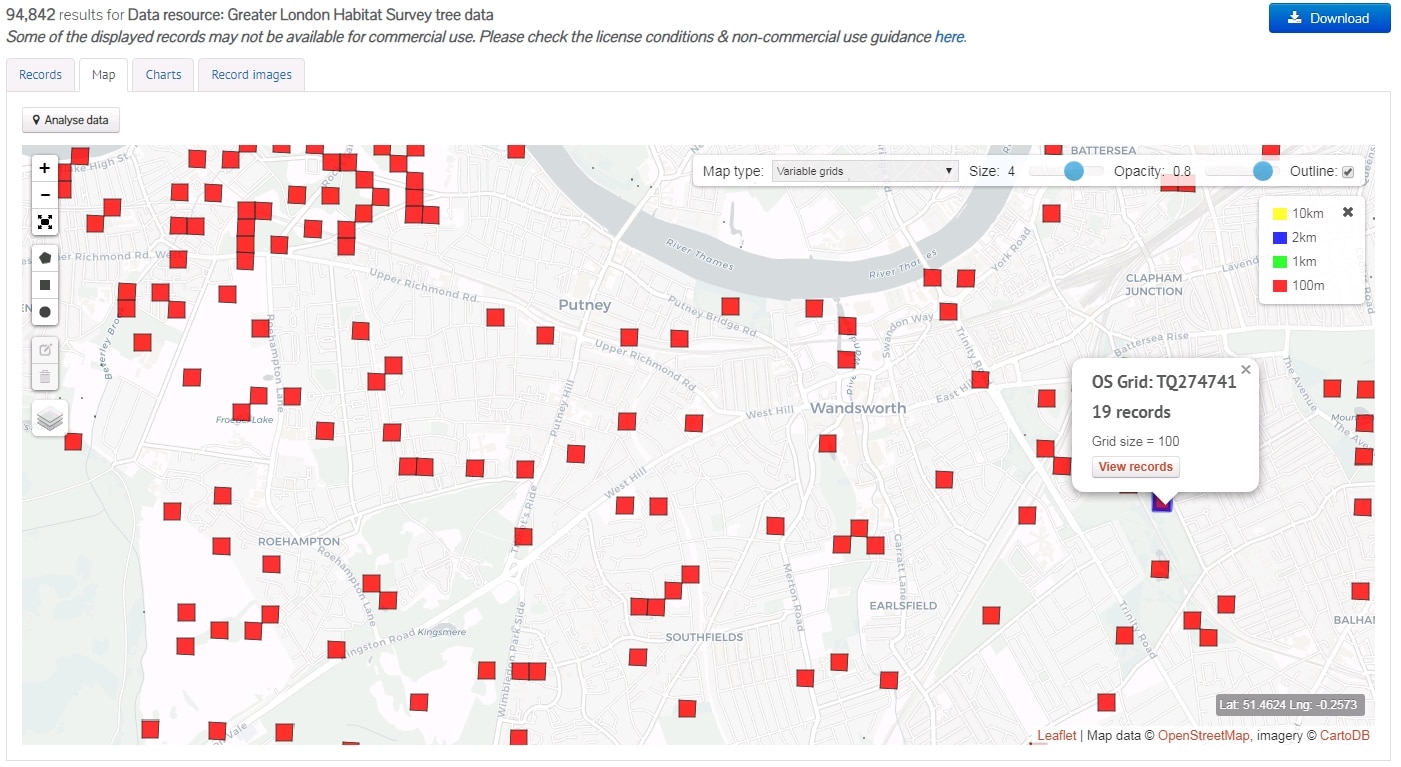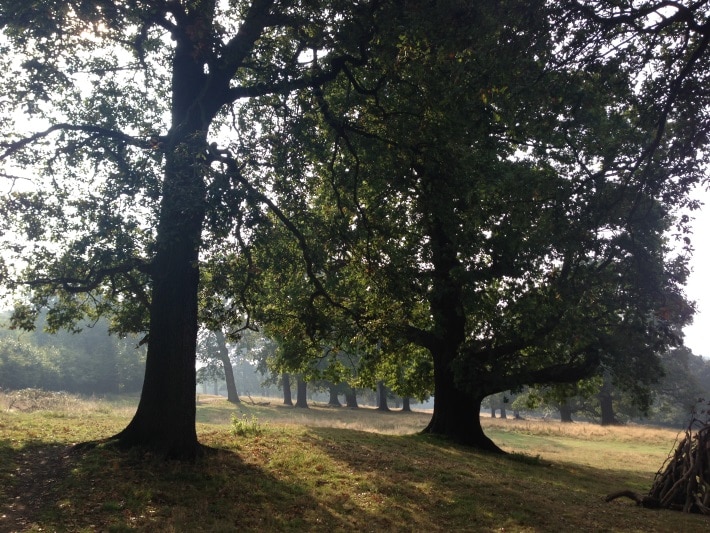Katharine Davies, GiGL Community Officer

GiGL data on the NBN Atlas
In October we published our first open (CC-BY) dataset onto the National Biodiversity Network (NBN) Atlas, entitled Greater London Habitat Survey tree data. This comprehensive dataset contains 94,842 tree records across Greater London, with 100% of records having verified identifications.
We wanted to release a dataset that would accurately act as a snapshot in time and could be of great use as openly available data. We also hope the thousands of tree records will help demonstrate just how green London is.
Data sharing is a big part of what GiGL does. Publishing data on the NBN Atlas is just one way we share data. The Atlas is a fantastic resource and is the UK’s largest collection of biodiversity information. As a member of the National Biodiversity Network and the Open Data Institute (ODI) we think that open data are a brilliant, highly beneficial resource for many reasons and are therefore excited to be releasing our first species dataset in this way.

Trees in Richmond Park (c) ReImagine London Project
We are often limited in what data we can make open due to how the datasets were created. A dataset may represent hundreds of data providers collecting wildlife observations in an ad hoc manner where some may not have had the opportunity to express their data sharing preferences.
This tree dataset consists of records in London collated by GiGL from multiple habitat surveys commissioned by the London Ecology Unit, Greater London Authority and, for tree records in Wandsworth, by the Borough. As well as the benefit of having a small number of data owners, this data was collected using a clear survey methodology. The method used was a modified Phase I method, where only areas over 0.25ha were surveyed. This set methodology means we are confident the data can be used reliably and removes the issue of recording bias. This dataset does not include street trees. You can find a list of tree species included here.
By publishing this data on the NBN Atlas (and Global Biodiversity Information Facility – GBIF) we hope the data are more visible to researchers and students. We are curious about what data can be used for. We want to see and hear about projects and new ways people use the data which we may not have previously thought about, so please get in touch if you have any questions or would like to share your work using the data.
